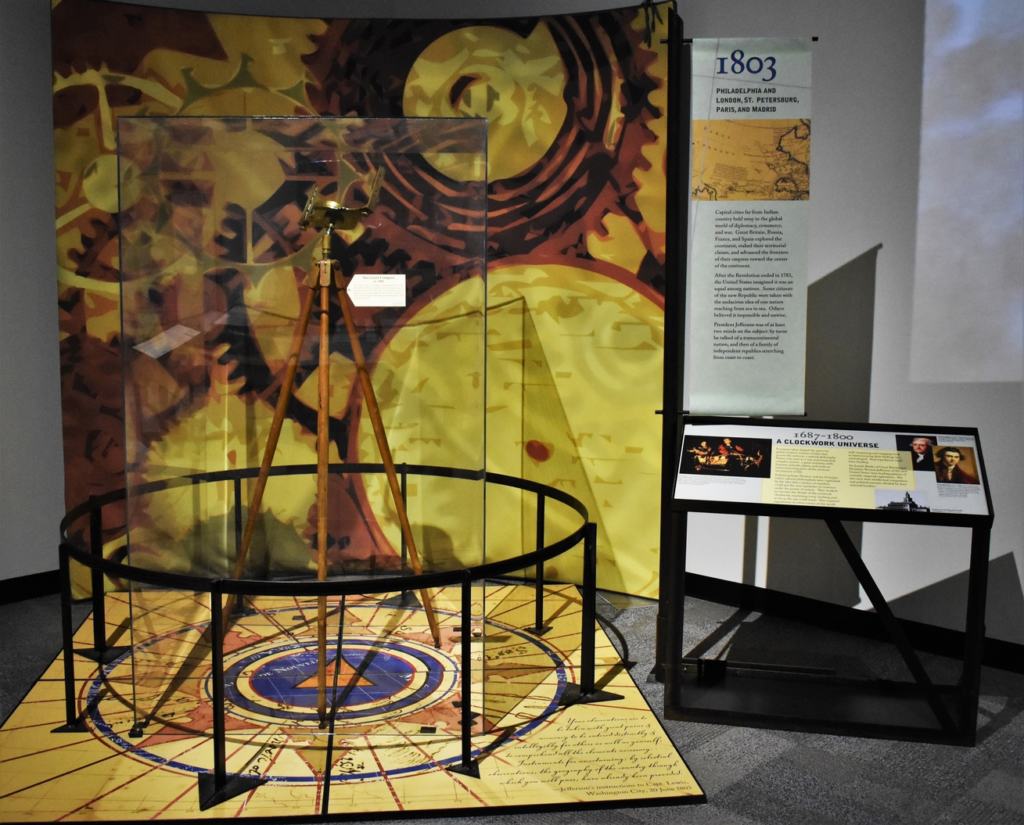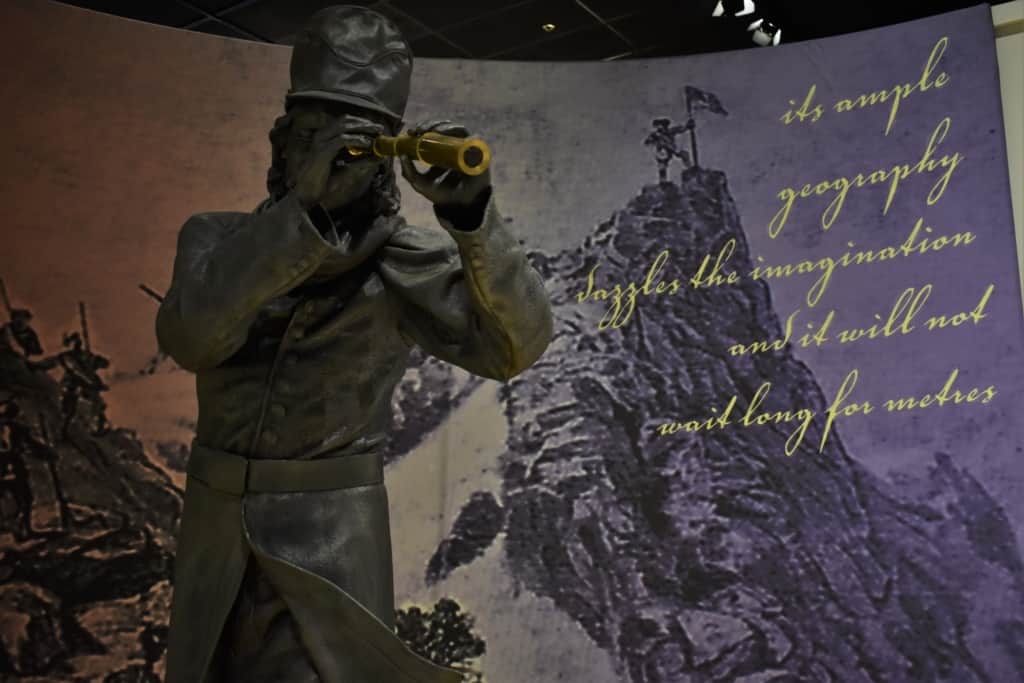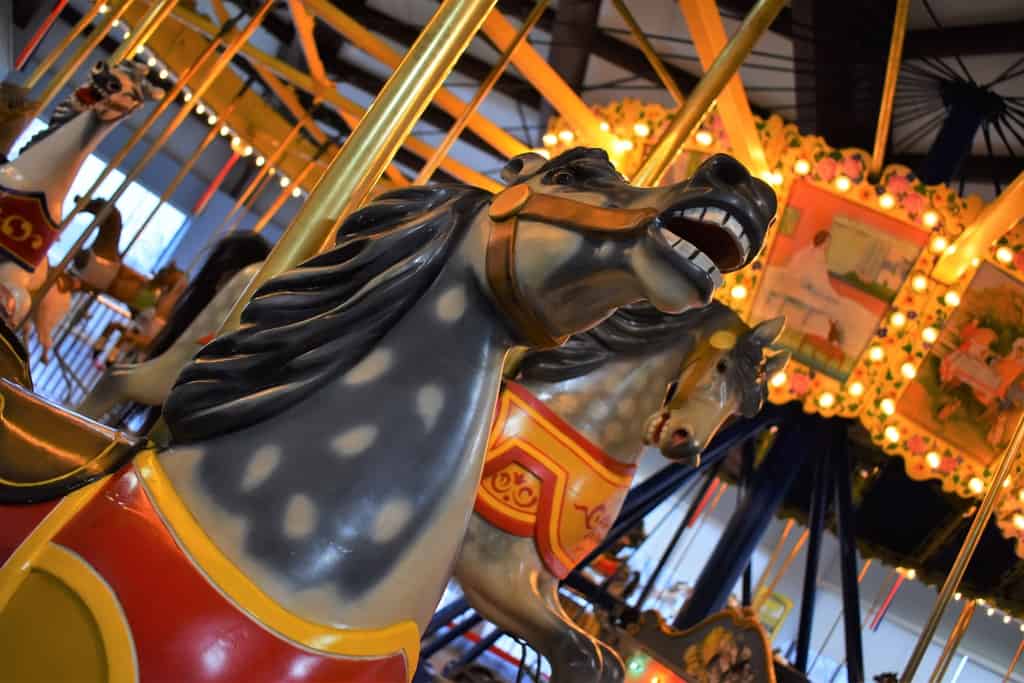It amazes us when we visit a site that we have been so close to, for many years, but have never explored. The Frontier Army Museum, at Fort Leavenworth, is a prime example. Oh, we’ve been to Leavenworth plenty of times, and even quite a few on the Fort Leavenworth Army base. We just never took the time to investigate this specific history museum. Well, since we couldn’t change the past, at least we could rectify it for the present. A day trip to Kansas’ first city would provide us with an opportunity to scope out the museum’s exhibits.

Exploring The West
The Frontier Army Museum has a nice collection of displays that focus on the Lewis and Clark expedition. In 1804, These two explorers, along with a sturdy crew, departed St. Louis in an effort to explore the lands making up the Louisiana Purchase. This two-year excursion subjected them to unforgiving elements, rough terrain, and dangerous waters. During their expedition, they would meet many of the Native Indians, and find them to be a mix of friendly and hostile.

Tools of the Trade
At the Frontier Army Museum, we found that the exhibit was set up in chronological order. This allowed us to move through time, as we worked our way by the displays. The collection of artifacts is impressive and includes many of the tools that would have been used by surveyors to chart the new lands. Some of theses items are the type that Lewis would have collected prior to departing on this epic journey.

Simple Directive
President Thomas Jefferson had successfully negotiated the Louisiana Purchase from France. For $15 million, America had expanded by over 800,000 square miles. In anticipation of a successful purchase, Jefferson asked Congress to help finance the expedition prior to all of the final details being worked out. In the end, 45 people departed the edge of the known continent on May 14, 1804. While we have all heard the exploits of this brave bunch, it is often forgotten that they were on a U.S. military expedition. Lewis and Clark had both served during the Revolutionary War and this excursion was being done by the Corps of Discovery.

Additional Explorations
While the largest portion of the explorers exhibit focuses on Lewis and Clark, there are others who also are noted. John Fremont was a scientific explorer who took multiple excursions across the Great Plains, through the Great Basin, and into Oregon territory. In 1842, Fremont led an expedition into the Rocky Mountains with the assistance of his guide, Kit Carson. During this excursion, one of the mountains was scaled, a flag was placed, and Fremont claimed the mountain range for the United States.

The Army’s Role in Exploration
In 1838, a group of Army officers were assembled to become the U.S. Army Corps of Topographical Engineers. Their assignment was to map and design federal civil works, such as lighthouses. This group would work to map out the new territory for future expansions. A variety of expeditions provided much needed information regarding boundaries and topographical anomalies. Some of the information gathered was used to help plan the routes for the transcontinental railroad.

Frontier Army Museum’s Helpful Tools
Although our main purpose for our visit to the Frontier Army Museum was now completed, we didn’t want to pass up an opportunity to see the rest of the exhibits. The museum offers a feature that helps visitors gain a better understanding of the exhibits. The “Audio Stop” feature is a keyed in number combination, that is used on your cell phone. After dialing the base number, you will be prompted to enter the specific exhibit number. Then you will hear a recorded piece about the display. It really helps expand the experience, like hearing details about this carriage that Abraham Lincoln used on his only visit to Kansas territory.

Early Ordinance
As we made our way through the museum, the topics shifted from exploration to defending the new territories. The Frontier Army Museum would obviously focus on this important role during the expansion of the modern civilization spread west. Forts were built to protect settlers from attacks, as well as to offer bases from which patrols could spread. One of the galleries at the museum holds a variety of cannons and howitzers that would have been used for defense, as well as in battles with foreign armies.

These howitzers would have seen action during the Mexican-American War in the 1840’s. The gallery also holds an assortment of displays that show ways these weapons were transported. One can almost imagine a train of ponies crossing the dusty plains, as they moved to and from strategic positions.

Moving the Army Forward
The final gallery held even more surprises. Old wagons and assorted equipment for packing out supplies showed just how rugged life would have been for the soldiers on the trails. Having to bring along all possible items needed in the field would have required great discipline. With all of these frontier items, we were a little shocked to see an old “Jenny” hanging from the rafters. The Curtiss JN-4D was a biplane produced for the Army, beginning in 1915. Manufactured in New Jersey, this became the primary training device for pilots preparing to battle in World War I. It became one of the most adaptable planes of its time.

Discovering Our Past
Sometimes it’s easy to overlook places that are right under your nose. Like others, we love exploring new destinations, which hold untold stories and treasures. Visits to places like the Frontier Army Museum remind us that no matter how much we see, there is still more to discover in our own backyard. We hope that stories like this will spark you to look a little deeper at places close to your home. Vacations are great for exploring new places, but there are plenty of weekends just waiting to be filled with little treasures like this one we found in Leavenworth, Kansas.






Thanks for all this interesting things about our county
Tou are very welcome. Glad you enjoyed it.
Sometimes Jeff and Crystal those spots in our backyard are the most fascinating. Right under our nose, then, we notice it. Fabulous post.
Ryan, this is so true. We are so glad you enjoyed the article.